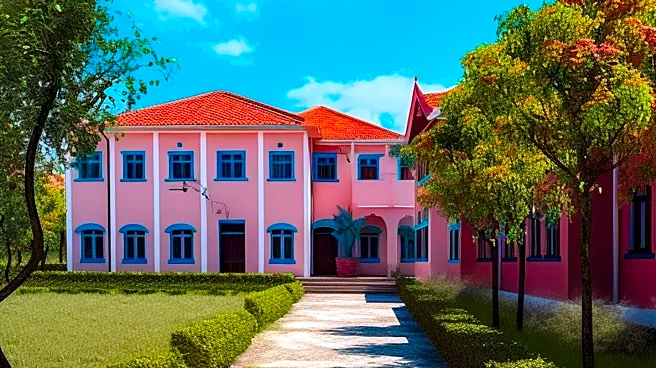Rapid Read • 8 min read
Spring House, the only private residence in Florida designed by renowned architect Frank Lloyd Wright, is currently on the market for $2.1 million. The house, completed in 1954, was commissioned by Clifton Lewis, a member of a prominent Tallahassee banking family. Wright designed the home in his hemicycle style, characterized by semi-circular floor plans and curved glass walls, which later influenced his design for New York's Guggenheim Museum. The property, located on 10 acres of secluded woodland, has been owned by the Lewis family since its construction. Despite efforts to preserve the house, including the establishment of the Spring House Institute in 1996, the residence has suffered damage over the years and was listed on the National Trust for Historic Preservation's list of endangered places in 2014.
AD
The sale of Spring House highlights the challenges of preserving historic architecture, particularly those designed by iconic figures like Frank Lloyd Wright. As one of only 11 hemicycle houses completed by Wright, Spring House represents a unique architectural style and historical significance. Its condition and the need for repairs underscore the financial and logistical difficulties faced by families and organizations in maintaining such properties. The listing has attracted attention from architectural enthusiasts and historians, emphasizing the cultural and educational value of preserving Wright's work. The outcome of the sale could influence future preservation efforts and funding initiatives for similar historic properties.
The future of Spring House will depend on the buyer's intentions, whether they aim to restore and preserve the property or repurpose it for other uses. The sale may prompt increased interest and investment in preserving Wright's architectural legacy, potentially leading to new funding opportunities or partnerships with preservation organizations. The Lewis family's decision to sell, driven by the costs of maintenance and repair, may also inspire other owners of historic properties to consider similar actions, impacting the market for architectural landmarks.
The sale of Spring House raises broader questions about the sustainability of preserving historic homes, especially those requiring significant restoration. It highlights the balance between maintaining architectural heritage and adapting to modern needs and financial realities. The property's listing may spark discussions on the ethical responsibilities of preserving cultural landmarks and the role of public and private entities in supporting these efforts.
AD
More Stories You Might Enjoy












